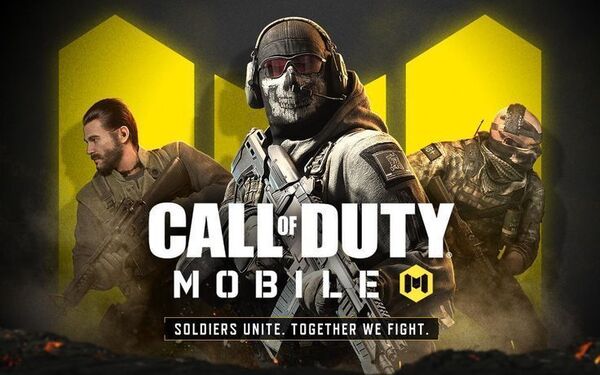Since its debut in 2003, Call of Duty has become one of the world’s most popular and influential first-person shooter (FPS) franchises. Spanning over two decades, it has evolved from historical World War II shooters to modern and futuristic battlefields, shaping both single-player campaigns and competitive multiplayer landscapes.
In this in-depth guide, structured across 10 chronologically arranged sections, we’ll explore the history, innovations, cultural impact, pros and cons, and expert ratings of the Call of Duty franchise as of 2025.
1. The Birth of Call of Duty: A World War II Classic (2003–2005)
Call of Duty launched in 2003, developed by Infinity Ward and published by Activision. Its key distinguishing features included:
-
Realistic, squad-based combat inspired by historical World War II battles.
-
Immersive sound design and cinematic set-pieces.
-
AI-controlled allies participating in large-scale fights.
Unlike its rival Medal of Honor, Call of Duty introduced more dynamic and immersive battle scenarios. It became an instant hit, spawning sequels like Call of Duty 2 (2005), which improved graphics and introduced regenerating health mechanics—an FPS innovation at the time.
2. Expansion into Modern Warfare: A Genre-Defining Shift (2007–2009)
In 2007, Call of Duty 4: Modern Warfare marked a turning point:
-
Moved the setting to present-day military conflicts.
-
Introduced killstreaks, perks, and custom classes in multiplayer.
-
Featured a gripping single-player campaign with characters like Captain Price.
Modern Warfare not only reinvented Call of Duty but also revolutionized online multiplayer FPS gameplay. It inspired countless imitators and solidified COD’s dominance in the gaming world.
Modern Warfare 2 (2009) further escalated the franchise’s popularity, adding the controversial "No Russian" mission and refining multiplayer with new killstreaks and game modes.
3. Black Ops Era: Covert Ops and Zombies Take Center Stage (2010–2013)
With Call of Duty: Black Ops (2010), Treyarch introduced:
-
A Cold War-era storyline featuring CIA black ops missions.
-
Deeper character development and narrative twists.
-
Expanded Zombies mode, becoming a franchise staple.
Black Ops 2 (2012) pushed boundaries with:
-
Branching campaign storylines and player choices.
-
The introduction of futuristic weapons and drones.
-
League Play: an early attempt at structured online ranked multiplayer.
The Black Ops sub-series remains one of the most beloved segments of the COD universe due to its mix of historical and sci-fi elements.
4. Futuristic Experiments: Advanced Warfare, Infinite Warfare, and Community Feedback (2014–2016)
During this period, Activision pushed Call of Duty into futuristic settings:
-
Advanced Warfare (2014) introduced Exo-suits for boosted movement and vertical combat.
-
Black Ops 3 (2015) added wall-running and cybernetic enhancements.
-
Infinite Warfare (2016) ventured into space battles and zero-gravity combat.
While these games innovated with mechanics, fan response was mixed. Many long-time players felt the series had drifted too far from its roots. This feedback played a crucial role in shaping future entries.
5. Return to Roots: WWII and Classic Combat (2017–2018)
Responding to player demand for grounded, historical settings, Call of Duty: WWII (2017) brought the franchise back to its origins:
-
Focused on traditional, boots-on-the-ground gameplay.
-
Featured a gritty, realistic portrayal of World War II events.
-
Introduced War Mode in multiplayer, focusing on objective-driven teamwork.
Although WWII didn’t reach Modern Warfare’s heights, it helped re-balance the series between futuristic experiments and grounded realism.
6. Modern Warfare Reboot and the Rise of Warzone (2019–2021)
Call of Duty: Modern Warfare (2019) rebooted the iconic sub-series with:
-
Stunning new graphics using the IW 8.0 engine.
-
Realistic sound design and weapon mechanics.
-
Cross-platform multiplayer across PC, PlayStation, and Xbox.
Most importantly, in 2020 Activision launched Call of Duty: Warzone:
-
A free-to-play battle royale mode.
-
Up to 150 players per match.
-
Shared progression with Modern Warfare.
Warzone quickly became one of the most-played battle royale games, attracting millions of players globally. Its success established COD as a dominant force in the live-service gaming model.
7. Black Ops Cold War and Vanguard: Navigating Mixed Reception (2020–2022)
Following Warzone’s success:
-
Black Ops Cold War (2020) revisited the Cold War with advanced storytelling and CIA intrigue.
-
Vanguard (2021) returned to WWII again but received mixed reviews for its lack of innovation.
During this period, players debated COD’s annual release cycle. Some felt it led to franchise fatigue, while others appreciated the steady flow of content and events.
8. Modern Warfare II and Warzone 2.0: Refinement and Expansion (2022–2024)
Call of Duty: Modern Warfare II (2022) served as a direct sequel to 2019’s reboot:
-
Introduced improved AI systems in both single-player and multiplayer.
-
Enhanced graphics and gunplay realism.
-
Built upon Warzone’s formula with Warzone 2.0.
Warzone 2.0 added:
-
Proximity chat and more tactical mechanics.
-
A new DMZ extraction mode.
-
Stronger integration with seasonal battle passes.
These updates solidified COD’s dominance in both premium and free-to-play shooter markets.
9. The Future of Call of Duty (2025 and Beyond)
As of 2025, Call of Duty shows no signs of slowing down. Key trends include:
-
Continued Warzone evolution with Warzone Mobile’s full rollout.
-
Rumored “Black Ops Gulf War” title in development.
-
Integration with emerging technologies like cloud gaming and AI-driven dynamic events.
-
Greater esports investment, with the Call of Duty League expanding globally.
Activision’s acquisition by Microsoft has also opened new possibilities for Game Pass integration and Xbox-first content releases.
Conclusion: Why Call of Duty Remains a Shooter Titan in 2025
Few gaming franchises have achieved the scale, influence, and longevity of Call of Duty. From its humble WWII beginnings to its modern battle royale dominance, COD has continually adapted, introducing new mechanics, stories, and technologies.
With an expert rating of 4.7/5, Call of Duty is recommended for:
-
FPS fans seeking diverse modes and regular content.
-
Competitive players interested in esports and ranked play.
-
Casual gamers enjoying quick multiplayer sessions.
While not every yearly release hits the same high notes, the franchise as a whole remains one of gaming’s defining pillars. Whether you’re a veteran from Modern Warfare 2’s golden days or a Warzone newcomer, there’s always something new waiting on the battlefield in Call of Duty.



























